Epigallocatechin gallate prevents senescence by alleviating oxidative stress and inflammation in WI-38 human embryonic fibroblasts
- PMID: 35528565
- PMCID: PMC9070540
- DOI: 10.1039/c9ra03313k
Epigallocatechin gallate prevents senescence by alleviating oxidative stress and inflammation in WI-38 human embryonic fibroblasts
Abstract
Increased levels of oxidative stress and inflammation are the underlying mechanisms behind the aging process and age-related diseases. The purpose of our research is to explore whether epigallocatechin gallate (EGCG) can extend replicative life span by preventing the oxidative stress and inflammatory effects of WI-38 fibroblasts and the involved mechanisms in vitro. WI-38 cells were treated with different concentrations of EGCG (0, 25, 50 and 100 μM) at population doubling (PD) 25. At late-stage cells, we determined the age-associated genes with signaling through transcriptome sequencing. The expression profile of the targets in WI-38 fibroblasts was confirmed by bioinformatics analysis, qPCR and western blot. We found that EGCG markedly decreased reactive oxygen species (ROS), and inflammation factors, tumor necrosis factor-α (TNF-α), interleukin (IL)-6, and significantly increased cell proliferation at PD 35 and 45. EGCG treatments significantly decreased p53 and retinoblastoma (Rb) expressions, markedly increased p-Rb and E2F2 expressions as well as antioxidant enzymes and superoxide dismutase (SOD) 1 and SOD2 content, and obviously decreased the expressions of inflammation factors IL-32, TNF-α expressions at PD 45 WI-38 cells. Moreover, the effects were changed by EGCG treatment by p53 siRNA or overexpression. These findings in our studies reveal that EGCG treatments improved senescence and enhanced the replicative life span through alleviating oxidative stress and inflammation in WI-38 fibroblasts.
This journal is © The Royal Society of Chemistry.
Conflict of interest statement
The authors declare that they have no conflict of interests.
Figures

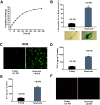
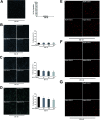
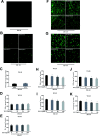


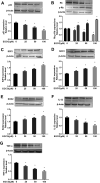

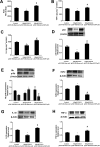
Similar articles
-
(-)-Epigallocatechin-3-gallate and hydroxytyrosol improved antioxidative and anti-inflammatory responses in bovine mammary epithelial cells.Animal. 2019 Dec;13(12):2847-2856. doi: 10.1017/S1751731119001356. Epub 2019 Jun 11. Animal. 2019. PMID: 31182175
-
Epigallocatechin-3-gallate attenuates microcystin-LR induced oxidative stress and inflammation in human umbilical vein endothelial cells.Chemosphere. 2017 Feb;168:25-31. doi: 10.1016/j.chemosphere.2016.10.037. Epub 2016 Oct 22. Chemosphere. 2017. PMID: 27776235
-
Epigallocatechin gallate improves insulin resistance in HepG2 cells through alleviating inflammation and lipotoxicity.Diabetes Res Clin Pract. 2018 Aug;142:363-373. doi: 10.1016/j.diabres.2018.06.017. Epub 2018 Jun 27. Diabetes Res Clin Pract. 2018. PMID: 29940201
-
Green Tea and Epigallocatechin Gallate (EGCG) for the Management of Nonalcoholic Fatty Liver Diseases (NAFLD): Insights into the Role of Oxidative Stress and Antioxidant Mechanism.Antioxidants (Basel). 2021 Jul 5;10(7):1076. doi: 10.3390/antiox10071076. Antioxidants (Basel). 2021. PMID: 34356308 Free PMC article. Review.
-
Green Tea Polyphenol (-)-Epigallocatechin-3-Gallate (EGCG): A Time for a New Player in the Treatment of Respiratory Diseases?Antioxidants (Basel). 2022 Aug 13;11(8):1566. doi: 10.3390/antiox11081566. Antioxidants (Basel). 2022. PMID: 36009285 Free PMC article. Review.
Cited by
-
Epigallocatechin Gallate (EGCG): Pharmacological Properties, Biological Activities and Therapeutic Potential.Molecules. 2025 Feb 1;30(3):654. doi: 10.3390/molecules30030654. Molecules. 2025. PMID: 39942757 Free PMC article. Review.
-
Flavonoids as Natural Anti-Inflammatory Agents in the Atopic Dermatitis Treatment.Pharmaceutics. 2025 Feb 15;17(2):261. doi: 10.3390/pharmaceutics17020261. Pharmaceutics. 2025. PMID: 40006628 Free PMC article. Review.
-
EGCG binds intrinsically disordered N-terminal domain of p53 and disrupts p53-MDM2 interaction.Nat Commun. 2021 Feb 12;12(1):986. doi: 10.1038/s41467-021-21258-5. Nat Commun. 2021. PMID: 33579943 Free PMC article.
-
FOXO1 contributes to cigarette smoke condensate-induced cellular senescence and fibrosis in lung fibroblasts through activating the TGF-β1/Smad2/3 signaling pathway.Immunol Res. 2025 Jun 11;73(1):94. doi: 10.1007/s12026-025-09646-1. Immunol Res. 2025. PMID: 40498253
-
The Potential Role of Polyphenols in Oxidative Stress and Inflammation Induced by Gut Microbiota in Alzheimer's Disease.Antioxidants (Basel). 2021 Aug 27;10(9):1370. doi: 10.3390/antiox10091370. Antioxidants (Basel). 2021. PMID: 34573002 Free PMC article. Review.
References
-
- Tsubota K. Nippon Ganka Gakkai Zasshi. 2007;111:193–205. - PubMed
LinkOut - more resources
Full Text Sources
Research Materials
Miscellaneous

